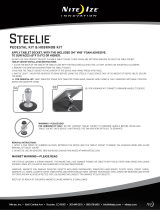
Table of contents
1 Product description ....................................................................................................................................... 1
2 External component identification ................................................................................................................. 3
3 Illustrated parts catalog ................................................................................................................................ 5
Locating the product number and serial number ................................................................................................. 5
Tablet major components ..................................................................................................................................... 6
Miscellaneous parts ............................................................................................................................................... 7
4 Removal and replacement preliminary requirements ....................................................................................... 9
Tools required ........................................................................................................................................................ 9
Service considerations ........................................................................................................................................... 9
Plastic parts ......................................................................................................................................... 9
Cables and connectors ........................................................................................................................ 9
Grounding guidelines ........................................................................................................................................... 10
Electrostatic discharge damage ....................................................................................................... 10
Packaging and transporting guidelines ......................................................................... 11
Workstation guidelines ................................................................................ 11
5 Removal and replacement procedures ........................................................................................................... 13
Tablet component replacement procedures ...................................................................................................... 13
Unlocking the device and disabling Always On Remote Management ............................................................... 13
Back cover ............................................................................................................................................................ 14
Middle frame and battery .................................................................................................................................... 15
WWAN antenna .................................................................................................................................................... 17
Rear-facing webcam ............................................................................................................................................ 19
System board ....................................................................................................................................................... 20
GPS antenna ........................................................................................................................................................ 23
Transfer board ..................................................................................................................................................... 24
Display panel cable .............................................................................................................................................. 26
Front-facing webcam .......................................................................................................................................... 27
WLAN antenna ..................................................................................................................................................... 28
Speakers .............................................................................................................................................................. 29
v





















